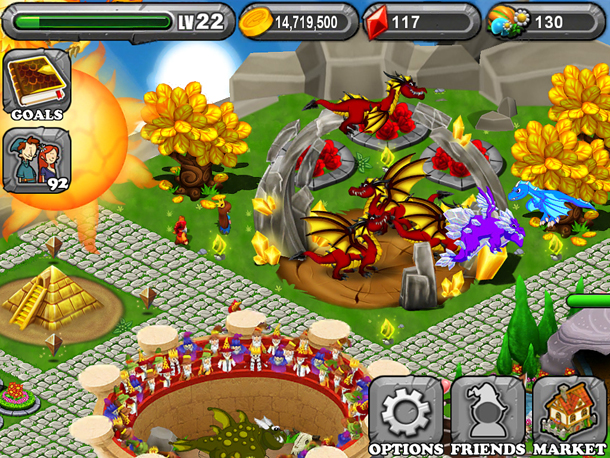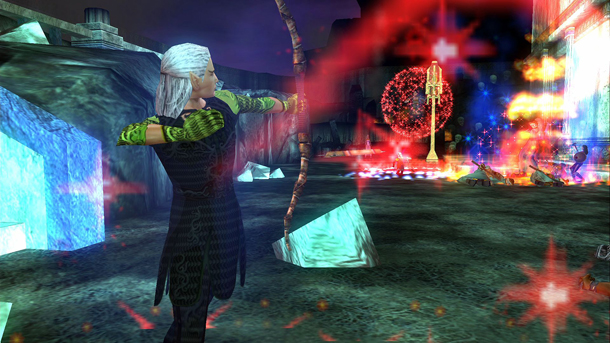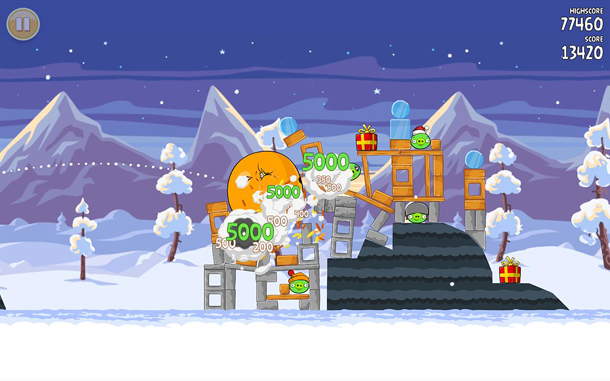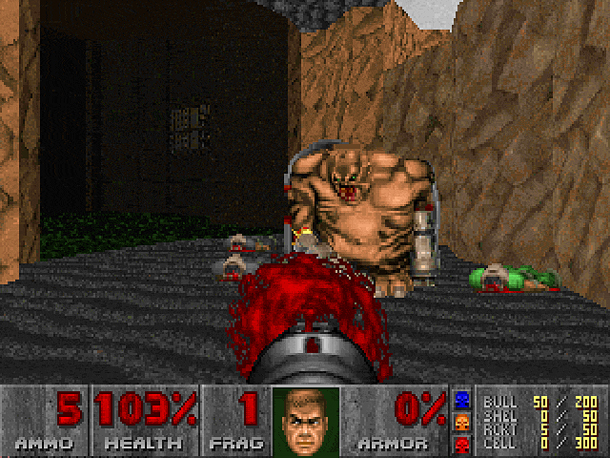Freemium or free-to-play: is there a difference
Two consonant concepts - freemium and free-to-play - for many have become absolute synonyms. Very often, when they write about the monetization of games, especially mobile, one can easily be used instead of the other.
But despite the frightening frequency with which freemium and free-2-play are confused today, they not only differ from each other, but also entered the world of mobile applications in completely different ways.
Let's see what the difference is.
')

Free-to-play
The concept of Free-to-Play (also spelled as free2play and f2p) today, first of all, is associated with multiplayer and social games. Including with similar games on mobile devices.
These projects, as a rule, do not require money for the opportunity to play, but they do require patience. Actually, this f2p-games and earn. And also on our love for comfort, including gaming. You want the buildings to be built not during the day, but instantly - pay; wish it was not so difficult to play - pay, interested in new skins for your characters - again, pay.
It is not necessary to invest money in free-2-play games - that's why they are free, but it is difficult to get pleasure from the game without money, so many people make so-called micropayments. As a rule, the average cost of one purchase in such projects does not exceed $ 1. The task of the developer is to make sure that as many users as possible give up on this very dollar.
Role Origins

A similar model has developed naturally. Its origins go to the IMO beginning zero. At that time, most online projects not only asked for money for a box with a game, but also demanded a monthly payment (and this was far from thirty or even a hundred rubles). It is clear that to achieve success in these games, it was also necessary to invest time and their own strength.
Let not immediately, but the developers have guessed how to offer players to save both time and effort. So real money began to work in virtuality: for them it was possible to purchase a more powerful weapon or some kind of artifact.
Over time, it turned out that this scheme works fine even if the game client itself is free. Moreover, with free distribution, the audience of the game has increased many times, and, as you know, with a large audience comes a lot of money.
If we talk about the further history of this approach, then the social games took over the concept in a strongly modified form, where the user paid not only for items, but also for the opportunity to play, for example, an unlimited amount of time per day. Actually, in this form, it came to mobile platforms.
Freemium
The essence of this model is that you download for free not the whole game, but its demo free (free) version.

If, after playing, you understand that you want more, the developers offer for a few dollars to open access to the other levels, i.e. You are offered to buy a premium version. This is called the Freemium (free + premium) monetization model. As they say, the first dose is free, but you have to pay for the rest.
Among the most popular mobile games distributed by the Freemium model are Angry Birds, Cut the Rope, Crocodile Swamp and this is not a complete list.
Back to the past
In the late 1980s of the last century, small development teams laid out on the electronic wall of announcements (BBS) a trial version of the game, which ended in the most interesting place. To get access to the full version, you had to pay. At that time, this version of the game was called shareware.

In the gaming industry, the term shareware lasted until the middle of zero. Along with the proliferation of PC and the Internet, casual games appeared that satisfy the unassuming tastes of a wide audience, including office workers and housewives. The terms shareware and freeware haven't spoken to them about anything. Perhaps it was precisely them that the distributors of casual products replaced shareware with the concept of Try & Buy.
Against this background, Paid did not sound very attractive, so the concept of Premium appeared, denoting the content of the “highest standard”, which, of course, is worthy of buying it, even without getting acquainted with the trial version.
Actually, the term Freemium appeared by analogy with Premium, and in many respects, perhaps because it turned out to be more harmonious than shareware. In other words, the free version of the product of the highest standard began to be called so.
Why confuse?
The ability to pay for the full version without leaving the mobile application takes the Freemium game to the category of projects that support in-app purchase (ie, in-app purchases). The latter is confusing, since these same IAPs are also used to pay for various “chips” in F2P.
If you understand the essence, then these concepts are quite difficult to confuse.
Free-to-play - you can play for free, but regular small purchases make it possible to do it with greater comfort and get access to great opportunities. In this way, most social games are monetized; at the same time, often for real money, the game currency is sold first, which users spend already on virtual items.
Freemium is a free distribution model of the “limited” version of the game with the ability to purchase the full, “premium” version. Sometimes in this case, users are also offered sets of additional levels for a fee.
But despite the frightening frequency with which freemium and free-2-play are confused today, they not only differ from each other, but also entered the world of mobile applications in completely different ways.
Let's see what the difference is.
')

Free-to-play
The concept of Free-to-Play (also spelled as free2play and f2p) today, first of all, is associated with multiplayer and social games. Including with similar games on mobile devices.
These projects, as a rule, do not require money for the opportunity to play, but they do require patience. Actually, this f2p-games and earn. And also on our love for comfort, including gaming. You want the buildings to be built not during the day, but instantly - pay; wish it was not so difficult to play - pay, interested in new skins for your characters - again, pay.
It is not necessary to invest money in free-2-play games - that's why they are free, but it is difficult to get pleasure from the game without money, so many people make so-called micropayments. As a rule, the average cost of one purchase in such projects does not exceed $ 1. The task of the developer is to make sure that as many users as possible give up on this very dollar.
Role Origins

A similar model has developed naturally. Its origins go to the IMO beginning zero. At that time, most online projects not only asked for money for a box with a game, but also demanded a monthly payment (and this was far from thirty or even a hundred rubles). It is clear that to achieve success in these games, it was also necessary to invest time and their own strength.
Let not immediately, but the developers have guessed how to offer players to save both time and effort. So real money began to work in virtuality: for them it was possible to purchase a more powerful weapon or some kind of artifact.
Over time, it turned out that this scheme works fine even if the game client itself is free. Moreover, with free distribution, the audience of the game has increased many times, and, as you know, with a large audience comes a lot of money.
If we talk about the further history of this approach, then the social games took over the concept in a strongly modified form, where the user paid not only for items, but also for the opportunity to play, for example, an unlimited amount of time per day. Actually, in this form, it came to mobile platforms.
Freemium
The essence of this model is that you download for free not the whole game, but its demo free (free) version.

If, after playing, you understand that you want more, the developers offer for a few dollars to open access to the other levels, i.e. You are offered to buy a premium version. This is called the Freemium (free + premium) monetization model. As they say, the first dose is free, but you have to pay for the rest.
Among the most popular mobile games distributed by the Freemium model are Angry Birds, Cut the Rope, Crocodile Swamp and this is not a complete list.
Back to the past
In the late 1980s of the last century, small development teams laid out on the electronic wall of announcements (BBS) a trial version of the game, which ended in the most interesting place. To get access to the full version, you had to pay. At that time, this version of the game was called shareware.

In the gaming industry, the term shareware lasted until the middle of zero. Along with the proliferation of PC and the Internet, casual games appeared that satisfy the unassuming tastes of a wide audience, including office workers and housewives. The terms shareware and freeware haven't spoken to them about anything. Perhaps it was precisely them that the distributors of casual products replaced shareware with the concept of Try & Buy.
Against this background, Paid did not sound very attractive, so the concept of Premium appeared, denoting the content of the “highest standard”, which, of course, is worthy of buying it, even without getting acquainted with the trial version.
Actually, the term Freemium appeared by analogy with Premium, and in many respects, perhaps because it turned out to be more harmonious than shareware. In other words, the free version of the product of the highest standard began to be called so.
Why confuse?
The ability to pay for the full version without leaving the mobile application takes the Freemium game to the category of projects that support in-app purchase (ie, in-app purchases). The latter is confusing, since these same IAPs are also used to pay for various “chips” in F2P.
If you understand the essence, then these concepts are quite difficult to confuse.
Free-to-play - you can play for free, but regular small purchases make it possible to do it with greater comfort and get access to great opportunities. In this way, most social games are monetized; at the same time, often for real money, the game currency is sold first, which users spend already on virtual items.
Freemium is a free distribution model of the “limited” version of the game with the ability to purchase the full, “premium” version. Sometimes in this case, users are also offered sets of additional levels for a fee.
Source: https://habr.com/ru/post/148935/
All Articles